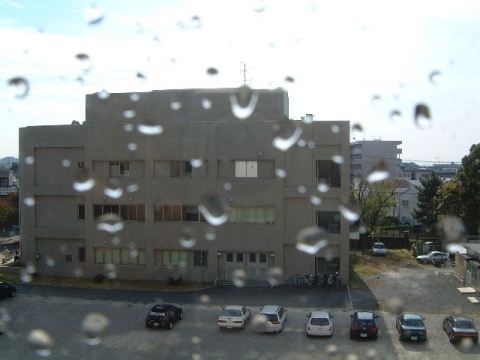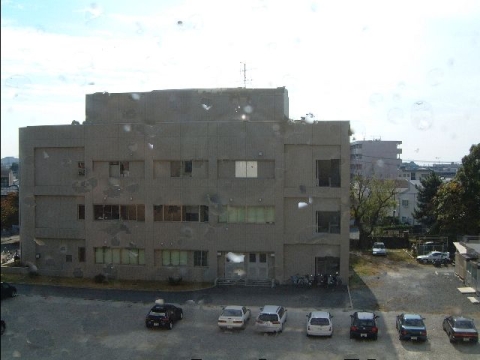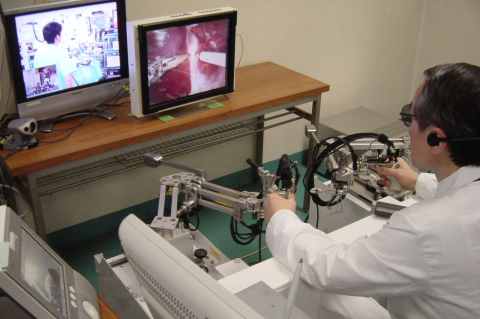Japan, the World's Leading "Robot Nation"
Have you heard of the word "monozukuri"?
"Monozukuri" is a term that has been used since the end of the 20th century to describe Japan's manufacturing industry. The concept of monozukuri covers everything from the production techniques, frameworks and philosophies that support the manufacturing industry and the products that are created through these processes and systems, to the individuals (craftspeople and engineers) who create these products. Monozukuri has long been the source of Japan's international competitiveness.
In recent years, robotics has been the driving force behind Japan's monozukuri culture.
In the area of industrial robotics, Japan has continuously maintained its position as the world's top exporter of robots in terms of value of shipments and number of operating units. Japan shipped approximately 3.4 billion yen's worth of robots in 2012, comprising nearly 50% of the global market share. The number of operating units in Japan was close to 300,000, which was about 23% of the global market share.
Japan leads the world in the field of robotics with highly competitive research, development and applied technologies. Further progress is being made in robotics so that Japan can become a creator of new values in monozukuri and services, as well as a base for creating robots that will contribute to the transformation of society.
"Monozukuri" is a term that has been used since the end of the 20th century to describe Japan's manufacturing industry. The concept of monozukuri covers everything from the production techniques, frameworks and philosophies that support the manufacturing industry and the products that are created through these processes and systems, to the individuals (craftspeople and engineers) who create these products. Monozukuri has long been the source of Japan's international competitiveness.
In recent years, robotics has been the driving force behind Japan's monozukuri culture.
In the area of industrial robotics, Japan has continuously maintained its position as the world's top exporter of robots in terms of value of shipments and number of operating units. Japan shipped approximately 3.4 billion yen's worth of robots in 2012, comprising nearly 50% of the global market share. The number of operating units in Japan was close to 300,000, which was about 23% of the global market share.
Japan leads the world in the field of robotics with highly competitive research, development and applied technologies. Further progress is being made in robotics so that Japan can become a creator of new values in monozukuri and services, as well as a base for creating robots that will contribute to the transformation of society.

The Changing and Widening Landscape of Robot Use
Since the 1970s, Japan has been at the world's cutting edge of industrial robotics.
In the past, the main places industrial robots could be found at work were factories for automobiles and electronic equipment. With the aim of freeing humans from rigorous labor, the use of industrial robots became widespread as they performed simple jobs such as assembling parts and physically dangerous work such as transporting heavy items in harsh and hazardous environments.
Due in part to the impressive effectiveness of robots at improving the productivity and quality of manufactured items, as well as guaranteeing safer work environments, Japan's "monozukuri" has maintained a globally competitive edge.
While robots have long been relegated to assistant roles in the monozukuri process, today's advancing technology, as well as external factors and societal circumstances, are taking robotics into new frontiers.
In recent years, public and private sector robotics projects in Europe, the Americas, China and other countries outside of Japan have caused a dramatic boost in demand for robots in these countries. Progress in robotics in the Americas and Europe is being shaped by the Internet of Things (IoT), which is seeing increasing implementation and usage as network technologies are upgraded. The advancement of IoT adoption will necessitate major reforms of the existing business models and frameworks of every industry, and countries around the world are jostling to take the lead in utilizing robots to capitalize on these developments. The integration of IoT and robotics will work to reform the very frameworks of industry, making such a large impact on our lives that it could be called "The Fourth Industrial Revolution."
Meanwhile, China, which faces rising human labor costs in manufacturing and intensifying competition with developing countries, is placing focus on introducing industrial robots to improve productivity and quality. These efforts have led to China becoming the top country in the world for number of industrial robots purchased, as well as the world's largest robot-importing country.
As global trends show the roles of robots growing ever greater, the "Robot Nation" of Japan is putting to use cutting-edge robotic technologies in a variety of fields besides manufacturing while keeping in mind societal demand. Robots are now working on the front lines in a diverse array of areas, including aeronautics, medicine/welfare, disaster mitigation, disaster investigation and rescue.
In the past, the main places industrial robots could be found at work were factories for automobiles and electronic equipment. With the aim of freeing humans from rigorous labor, the use of industrial robots became widespread as they performed simple jobs such as assembling parts and physically dangerous work such as transporting heavy items in harsh and hazardous environments.
Due in part to the impressive effectiveness of robots at improving the productivity and quality of manufactured items, as well as guaranteeing safer work environments, Japan's "monozukuri" has maintained a globally competitive edge.
While robots have long been relegated to assistant roles in the monozukuri process, today's advancing technology, as well as external factors and societal circumstances, are taking robotics into new frontiers.
In recent years, public and private sector robotics projects in Europe, the Americas, China and other countries outside of Japan have caused a dramatic boost in demand for robots in these countries. Progress in robotics in the Americas and Europe is being shaped by the Internet of Things (IoT), which is seeing increasing implementation and usage as network technologies are upgraded. The advancement of IoT adoption will necessitate major reforms of the existing business models and frameworks of every industry, and countries around the world are jostling to take the lead in utilizing robots to capitalize on these developments. The integration of IoT and robotics will work to reform the very frameworks of industry, making such a large impact on our lives that it could be called "The Fourth Industrial Revolution."
Meanwhile, China, which faces rising human labor costs in manufacturing and intensifying competition with developing countries, is placing focus on introducing industrial robots to improve productivity and quality. These efforts have led to China becoming the top country in the world for number of industrial robots purchased, as well as the world's largest robot-importing country.
As global trends show the roles of robots growing ever greater, the "Robot Nation" of Japan is putting to use cutting-edge robotic technologies in a variety of fields besides manufacturing while keeping in mind societal demand. Robots are now working on the front lines in a diverse array of areas, including aeronautics, medicine/welfare, disaster mitigation, disaster investigation and rescue.
Examples of Robots Active in Various Fields
Japanese research institutions, corporations and similar entities work and collaborate with each other to implement Japan's advanced robot technology in a wide variety of areas.
The use of robots in space exploration is one area that is receiving quite a bit of attention on a global level as well as within Japan. Japan's robots, which are built to the highest global standards, possess high potential for helping to realize new endeavors in outer space.
The use of robots in space exploration is one area that is receiving quite a bit of attention on a global level as well as within Japan. Japan's robots, which are built to the highest global standards, possess high potential for helping to realize new endeavors in outer space.

?JAXA/NASA
Societal demand is also driving the research and development of disaster-response robots for rescuing those affected by large-scale disasters, inspecting the interiors of structures, and conducting other such operations vital to emergency situations. In the wake of the 2011 Great East Japan Earthquake and Tsunami disaster, Japan accelerated development and application of disaster-response robots. The picture below shows a disaster-response robot decontaminating the Fukushima Daiichi Nuclear Power Station using a suction apparatus.

In the laboratory of Professor Atsushi Yamashita at the University of Tokyo School of Engineering's Department of Precision Engineering, advances are being made in research on solving societal issues through the use of robotics. Members of the laboratory are taking image processing technology that mimics the abilities of the human eye and implementing it into robots, multimedia and human interfaces, with the hope of putting this technology to use in the areas of disaster response and welfare.
One particular issue they are working on is achieving a clear field of vision in inclement weather and extreme environments. The idea is to have robots or other such devices go into adverse environments which are difficult for humans to enter, take pictures showing the conditions and situations within, and process these pictures to discern valuable information.
Currently, dispatching a camera-equipped robot into dangerous locations at a disaster site sometimes leads to the camera lens fogging up due to water vapor or becoming clouded or blocked with debris. Human eyes can see objects through a camera lens even if there are water droplets on the lens, and are thus able to grasp a general idea of the scene that the camera is showing. Computers, on the other hand, perceive water droplets as noise, and are therefore unable to correctly process the images being projected. The research at Professor Yamashita's laboratory combines image information relayed from multiple cameras to cut through the noise and secure a field of vision, thereby reproducing clear images. There are plans to use robots outfitted with this new technology in national projects that require immediate attention, such as responding to the Fukushima Daiichi Nuclear Power Station accident.
One particular issue they are working on is achieving a clear field of vision in inclement weather and extreme environments. The idea is to have robots or other such devices go into adverse environments which are difficult for humans to enter, take pictures showing the conditions and situations within, and process these pictures to discern valuable information.
Currently, dispatching a camera-equipped robot into dangerous locations at a disaster site sometimes leads to the camera lens fogging up due to water vapor or becoming clouded or blocked with debris. Human eyes can see objects through a camera lens even if there are water droplets on the lens, and are thus able to grasp a general idea of the scene that the camera is showing. Computers, on the other hand, perceive water droplets as noise, and are therefore unable to correctly process the images being projected. The research at Professor Yamashita's laboratory combines image information relayed from multiple cameras to cut through the noise and secure a field of vision, thereby reproducing clear images. There are plans to use robots outfitted with this new technology in national projects that require immediate attention, such as responding to the Fukushima Daiichi Nuclear Power Station accident.
 Camera lens with water droplets
Camera lens with water droplets A second camera lens with water droplets
A second camera lens with water droplets The two images with water droplets are processed to form this third, clearer image
The two images with water droplets are processed to form this third, clearer image
Japan faces a rapidly aging population against the backdrop of a low birthrate. Everyday use of robots in the fields of caregiving and welfare is expected to not only reduce the burden experienced by caregivers but also to provide the elderly with electronic companions that have a high capacity for communication. The illustration shows a robot dog. Robotic dogs and other pets are already produced by several leading companies and are valued for their communication and companionship capabilities.

The world is also seeing an increase in the development of medical robots.
The Japanese government has placed a priority on developing and disseminating medical equipment that utilizes robotics technology. Accordingly, the government promotes the product development, implementation and spread of innovations that will reduce the burdens of both medical professionals and patients alike, such as surgery assistant robots.
Members of Professor Mamoru Mitsuishi's and Professor Naohiko Sugita's laboratory in the University of Tokyo School of Engineering's Department of Mechanical Engineering are conducting robotics research with a focus on the fields of medicine and industrial processing. They are progressing with research on the creation of leading-edge robot and manufacturing technologies and the application of these technologies in various areas. In the medical field, the lab is currently conducting research and development on robot-assisted surgery and also working on an advanced, cutting-edge system making minimally invasive surgery possible.
In contrast to conventional surgery in which large openings are made in patients' bodies, minimally invasive surgery makes only small incisions. This kind of surgery lessens the burden on patients and reduces the time needed for patients to recover. However, minimally invasive surgery necessitates working within a confined space of the body cavity, so it is much more difficult than open surgery (especially in the case of abdominal surgery) and also places a heavy responsibility on doctors.
To alleviate these issues, an intuitively operable master-slave surgical robotic system has been developed by the University of Tokyo to assist doctors in conducting abdominal surgery. Surgeons use a console to control the arms and hands of a robot inserted into a patient's body, viewing a 3D endoscope also within the patient's body to see the affected area in real time and perform an operation. This robotic system makes it possible to conduct surgeries on areas within the body that human hands cannot reach, thereby reducing the strain on doctors and allowing for more advanced medical treatments. Furthermore, this type of system is being used increasingly more often in teletherapy. After concluding many successful trials in remote operations between Japan and Thailand and Japan and South Korea, it is anticipated that this surgical robotic system will help to correct imbalances in medical treatments offered between regions and amongst hospitals.
The Japanese government has placed a priority on developing and disseminating medical equipment that utilizes robotics technology. Accordingly, the government promotes the product development, implementation and spread of innovations that will reduce the burdens of both medical professionals and patients alike, such as surgery assistant robots.
Members of Professor Mamoru Mitsuishi's and Professor Naohiko Sugita's laboratory in the University of Tokyo School of Engineering's Department of Mechanical Engineering are conducting robotics research with a focus on the fields of medicine and industrial processing. They are progressing with research on the creation of leading-edge robot and manufacturing technologies and the application of these technologies in various areas. In the medical field, the lab is currently conducting research and development on robot-assisted surgery and also working on an advanced, cutting-edge system making minimally invasive surgery possible.
In contrast to conventional surgery in which large openings are made in patients' bodies, minimally invasive surgery makes only small incisions. This kind of surgery lessens the burden on patients and reduces the time needed for patients to recover. However, minimally invasive surgery necessitates working within a confined space of the body cavity, so it is much more difficult than open surgery (especially in the case of abdominal surgery) and also places a heavy responsibility on doctors.
To alleviate these issues, an intuitively operable master-slave surgical robotic system has been developed by the University of Tokyo to assist doctors in conducting abdominal surgery. Surgeons use a console to control the arms and hands of a robot inserted into a patient's body, viewing a 3D endoscope also within the patient's body to see the affected area in real time and perform an operation. This robotic system makes it possible to conduct surgeries on areas within the body that human hands cannot reach, thereby reducing the strain on doctors and allowing for more advanced medical treatments. Furthermore, this type of system is being used increasingly more often in teletherapy. After concluding many successful trials in remote operations between Japan and Thailand and Japan and South Korea, it is anticipated that this surgical robotic system will help to correct imbalances in medical treatments offered between regions and amongst hospitals.
 A surgeon operating the master manipulators
A surgeon operating the master manipulators Slave manipulators, which interact directly with the patient and are located remotely from the surgeon
Slave manipulators, which interact directly with the patient and are located remotely from the surgeon
This is a janken (rock-paper-scissors) robot that has a 100% win rate at the game. An example of a human-machine collaboration system, this robot uses high-speed vision to recognize the position and shape of a human hand once every millisecond. The robot then forms a hand that will beat the shape the human hand is making.
Advancing Robot Creation in Japan
As a nation that manufactures products that are both high-tech and stylishly designed, Japan has impacted the world in various ways. Advanced technological development and attention to detail are considered to be the characteristics of Japan's monozukuri, which is recognized the world over for its excellence in creating products and adding value to them.
With the Internet of Things becoming part of our everyday reality, the world must shift towards a society in which robots and humans can coexist and work together, while also responding with advanced technological capabilities to the diverse needs created by this new society. The technological and creative prowess developed by the "robot nation" of Japan, which has been a driving force in the field of robotics, will no doubt help Japan continue to lead the world in this area for years to come.






